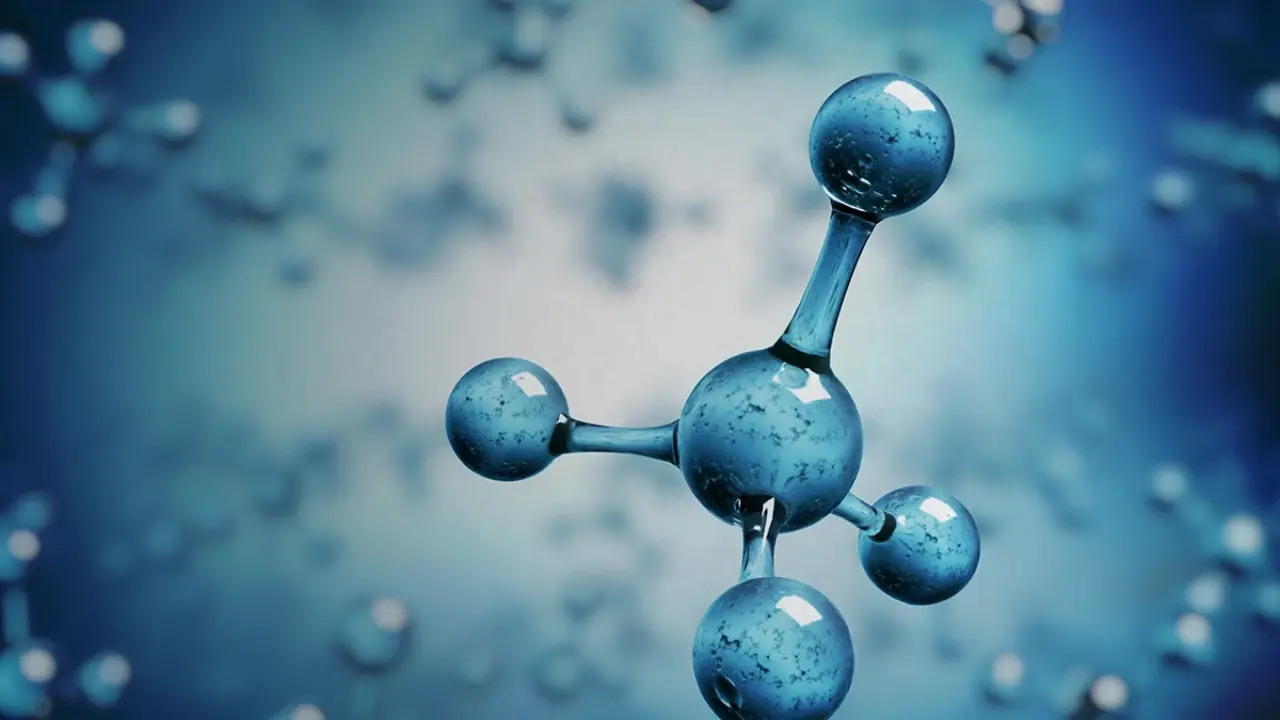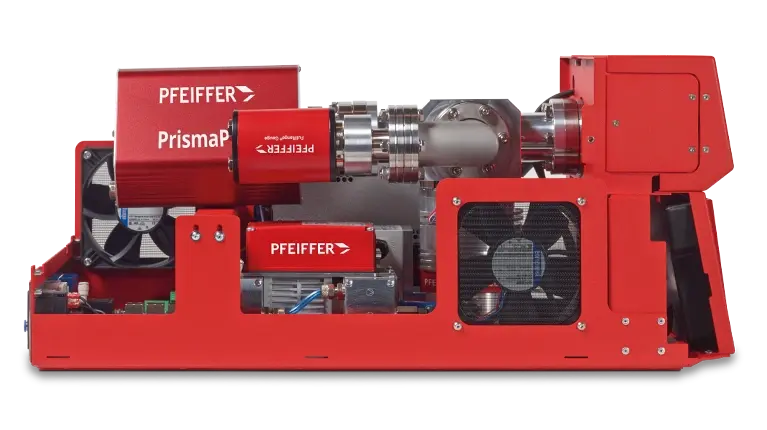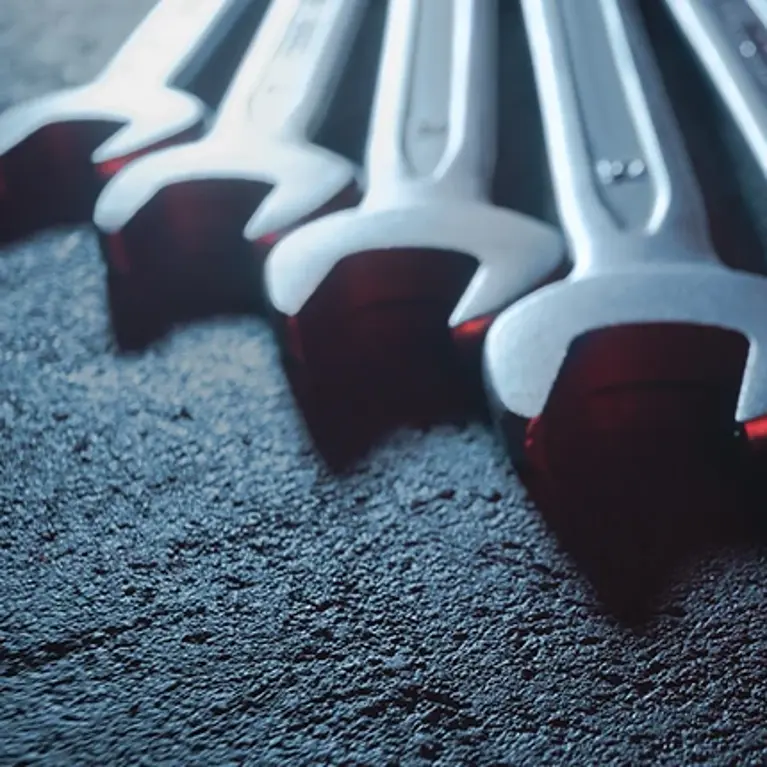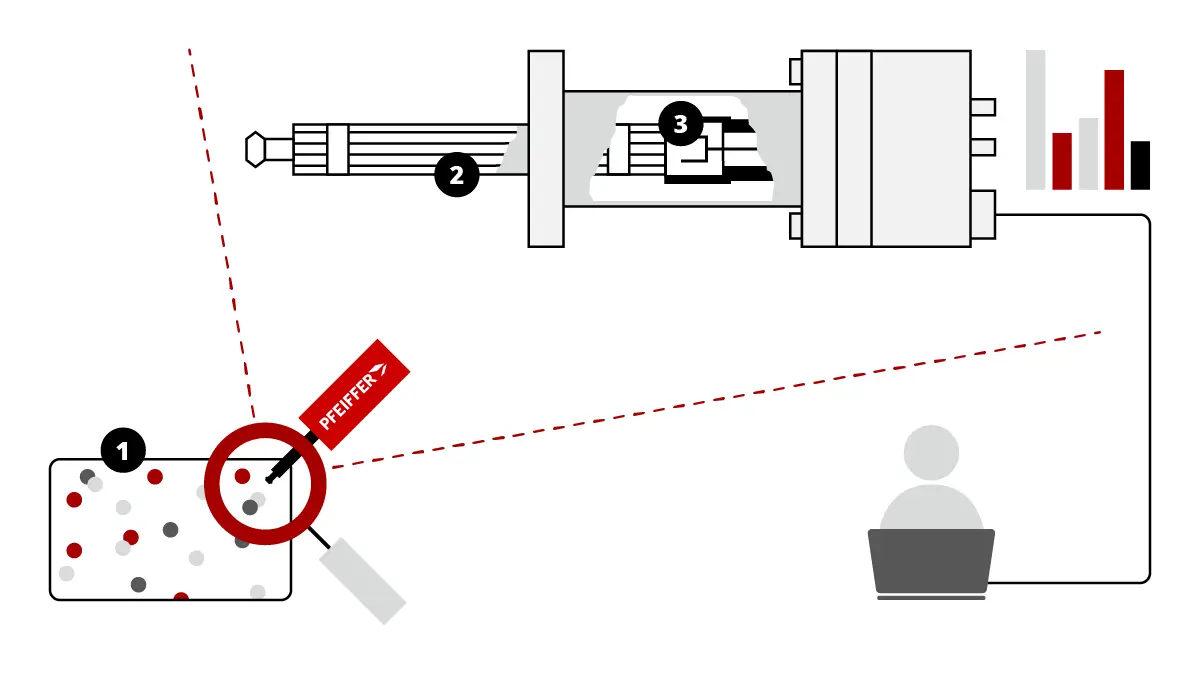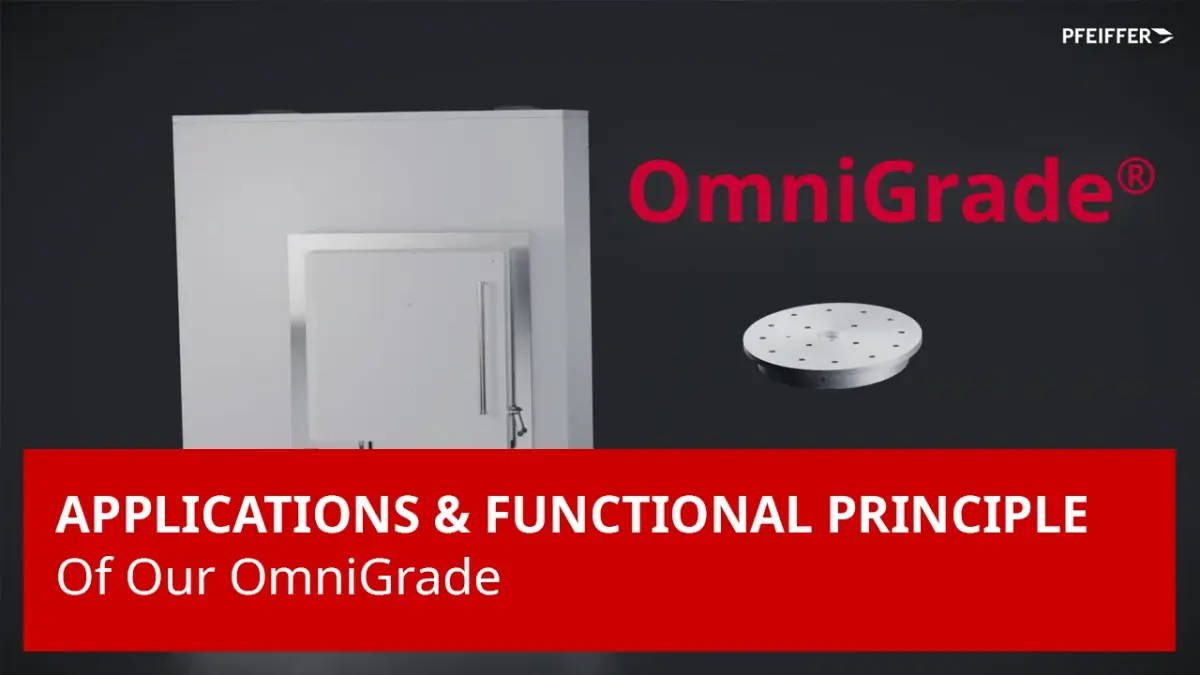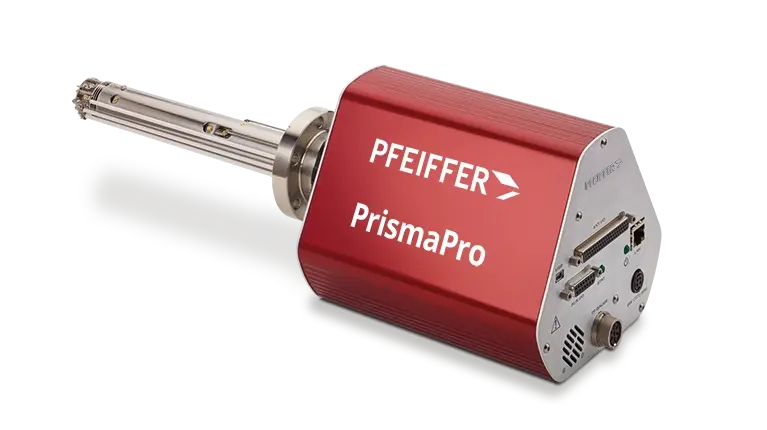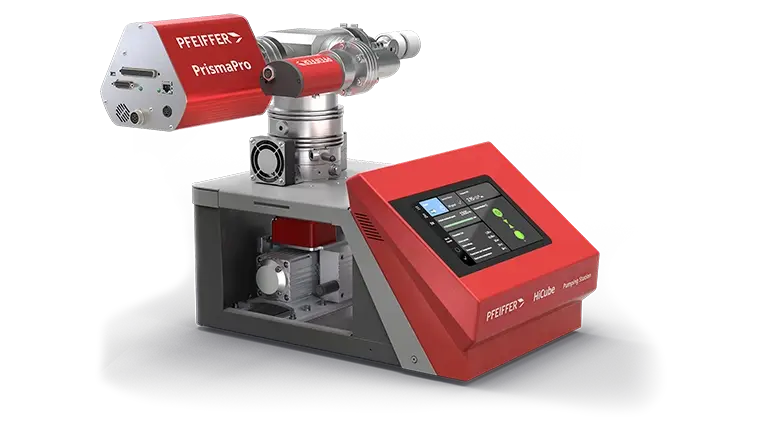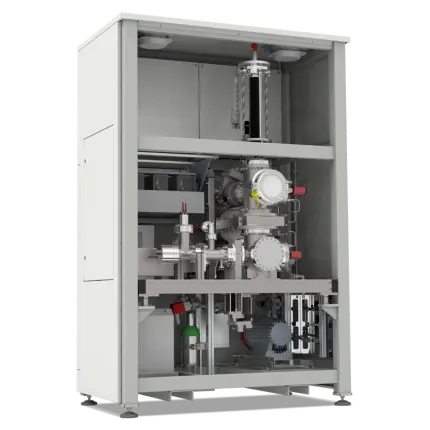How RGA works with quadrupole mass spectrometers
Quadrupole mass spectrometers (QMS) consist of three main components – the ion source, a mass filter, and the detector – which together form the actual analyzer. What sets QMS apart from other mass spectrometers is its quadrupole rod system.Requirements: Working pressures of 10⁻⁴ hPa (mbar) or lower are critical. If the connected vacuum chamber does not naturally reach this pressure, a dedicated vacuum system – typically combining a backing pump and a turbomolecular vacuum pump – is required to maintain optimal conditions. Operating at higher pressures can damage the QMS, so integrating total pressure measurement is strongly recommended.
